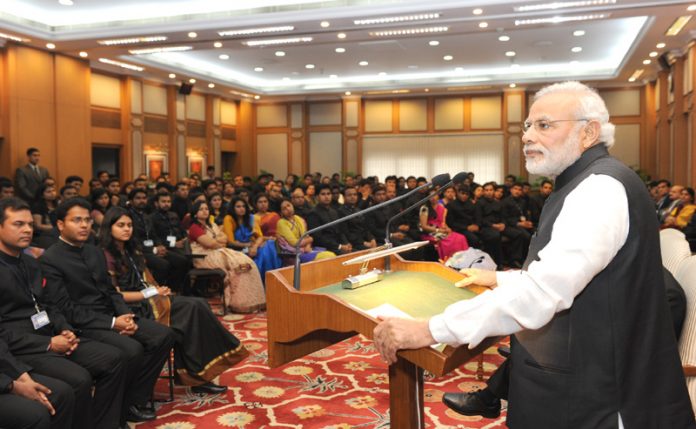In last five and a half years, one of the most remarkable features of Modi government has been anti-corruption drive. The five years of UPA-II government was the most corrupt period of Indian politics. Corruption cases worth billions of dollars were being revealed in every few months in the era of UPA2. The Indian populace hit the roads in such large numbers for the first time in protests against corruption. The Anti-corruption movement of Anna Hazare exhibited the anger of ‘common people’ against economic and political elites.
The Modi government started cleaning up the system from the very first year of their first term and has continued to do so even in the second term. Yesterday, Central Board of Indirect Taxes and Customs (CBIC) sacked 22 senior officers of Superintendent for corruption. The move comes in the backdrop of PM’s Independence Day speech where he said, “some black sheep in the tax administration may have misused their powers and harassed taxpayers, either by targeting honest assesses or by taking excessive action for minor or procedural violations.”
Previously in the month of June, Central Board of Direct Taxes (CBDT) sacked 12 officers in the month of June. The sacked officials belonged to 12 zones including Nagpur, Bhopal, Chennai, Bengaluru, Delhi, Jaipur, Kolkata, Meerut, Mumbai, Bengaluru Customs, Mumbai Customs Zone II and Chandigarh.
Last month, Modi government informed Lok Sabha that a staggering number of 312 government officials were forcibly retired only in the last five years. “The government had reviewed the performance of 36,000 Group A officials and more than 82,000 Group B government officials between July 2014 and May 2019”, said Dr Jitendra Singh, MoS, Ministry of Personnel, Public Grievances. He also informed the lower house that 125 Group A officers and 187 Group B officers were forcibly retired “on ground of lack of integrity and ineffectiveness in public interest”.
The Modi government seems to have taken a firm resolve to revolutionise Indian bureaucracy and its topmost priority is to rid the bureaucratic setup of inefficient, under-performing and corrupt officials in order to ensure that high standards of efficiency and performance can be maintained within the bureaucracy. Singh’s reply in the parliament corroborates the same. Indian bureaucracy, which is used to being embroiled in red-tape and corruption, needs to reinvent and Modi government’s way of punishing officials with compulsory retirement shall serve the purpose greatly.
Along with the massive anti-corruption operation that the Modi government has launched, it has also resolved to transform the bureaucracy with the help of the lateral entry scheme whereby the government seeks to bring in a talent pool from outside the civil services in order to transform the way Indian bureaucracy works.
Therefore, 40 percent of the Joint Secretaries are going to be non-IAS shaping up the Indian bureaucracy for present-day challenges. A clean bureaucracy equipped with expertise across several sectors has clearly emerged as the topmost priority for the Modi government.
